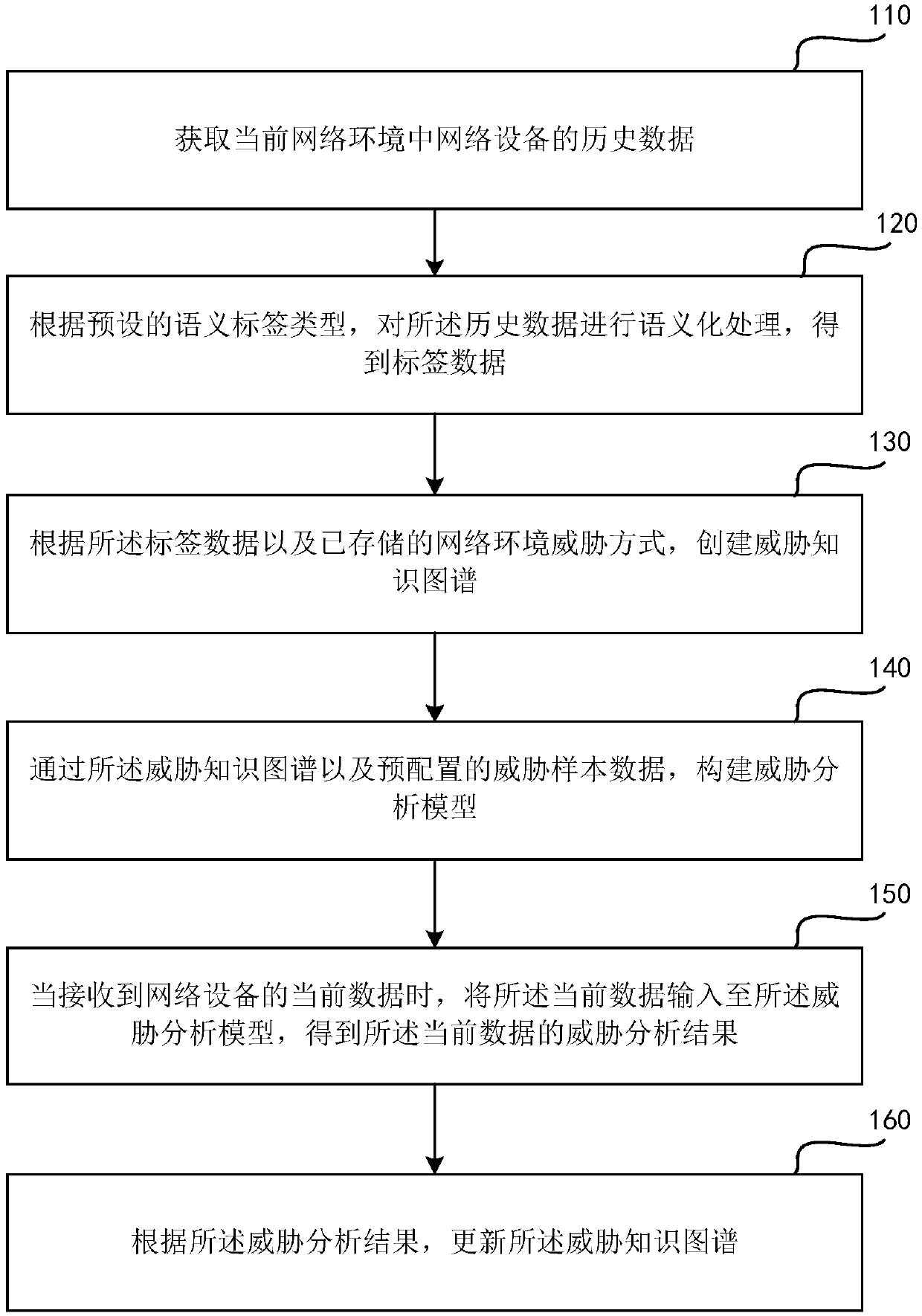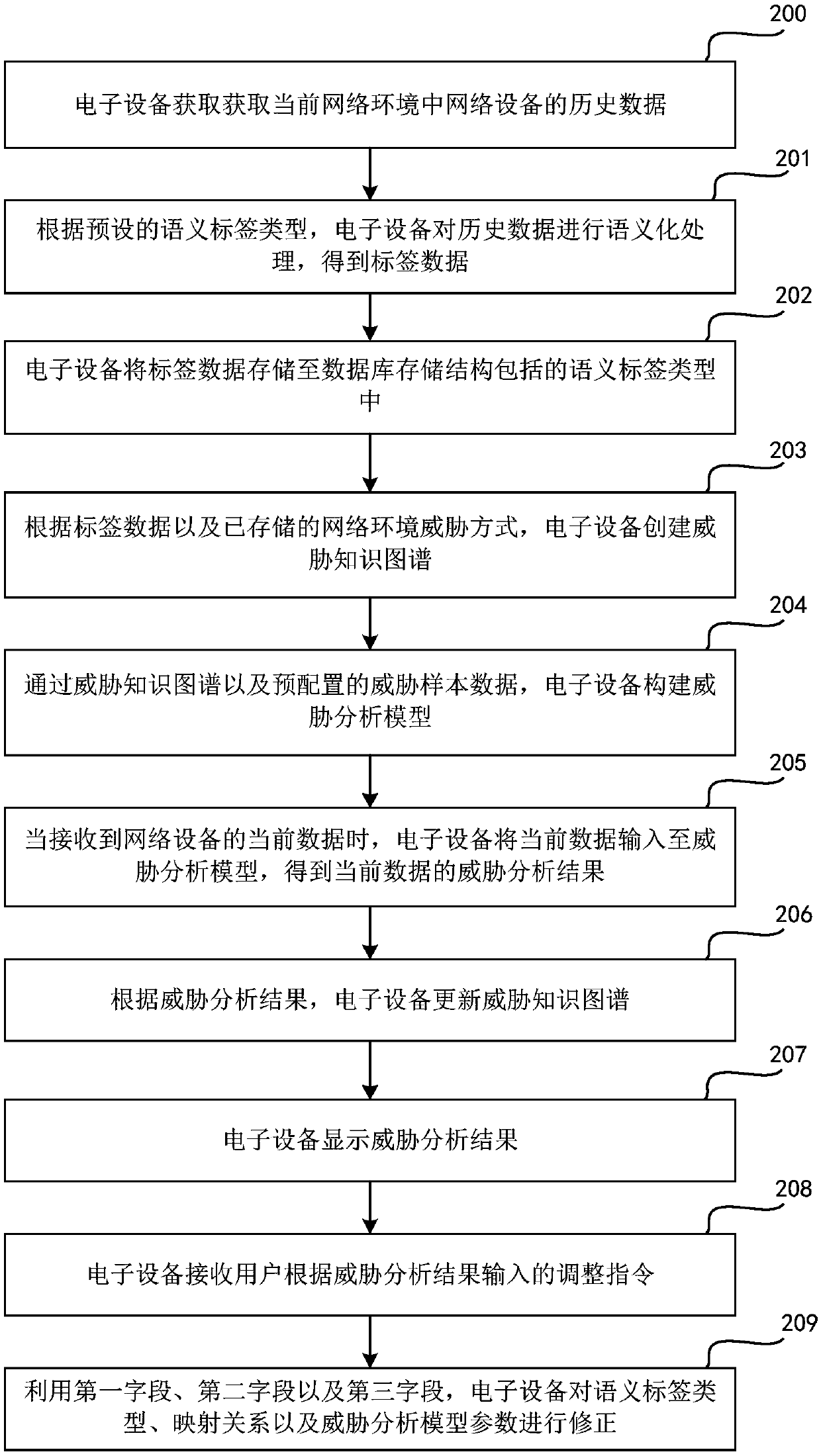Network threat analysis method and device, electronic equipment and storage medium
A technology of threat analysis and network equipment, applied in the field of network information security, can solve problems such as time-consuming
- Summary
- Abstract
- Description
- Claims
- Application Information
AI Technical Summary
Problems solved by technology
Method used
Image
Examples
Embodiment Construction
[0049] Embodiments of the present invention will be described in detail below in conjunction with the accompanying drawings.
[0050] It should be clear that the described embodiments are only some of the embodiments of the present invention, not all of them. Based on the embodiments of the present invention, all other embodiments obtained by persons of ordinary skill in the art without creative efforts fall within the protection scope of the present invention.
[0051] Attached below figure 1 , explain in detail the solutions provided by the embodiments of the present invention, figure 1 It is a flow chart of a network threat analysis method provided by an embodiment of the present invention, and the subject of implementation in the embodiment of the present invention is an electronic device. The electronic device may be a terminal device, such as a personal computer, a desktop computer, and the like. The electronic device can also be a server. Such as figure 1 As shown,...
PUM
 Login to View More
Login to View More Abstract
Description
Claims
Application Information
 Login to View More
Login to View More - R&D
- Intellectual Property
- Life Sciences
- Materials
- Tech Scout
- Unparalleled Data Quality
- Higher Quality Content
- 60% Fewer Hallucinations
Browse by: Latest US Patents, China's latest patents, Technical Efficacy Thesaurus, Application Domain, Technology Topic, Popular Technical Reports.
© 2025 PatSnap. All rights reserved.Legal|Privacy policy|Modern Slavery Act Transparency Statement|Sitemap|About US| Contact US: help@patsnap.com



